Have you ever thought about why some TV spokesperson campaigns work so well? What do some brands do to connect deeply with people?
We will look into 12 examples of TV spokesperson campaigns that stood out. We’ll see how working with famous athletes or challenging societal norms helped these brands. These stories offer great tips for anyone wanting to make their mark.
Let’s dive into what made these TV campaigns tick. We’ll learn their strategies, outcomes, and tips. This could help you in your marketing adventures.
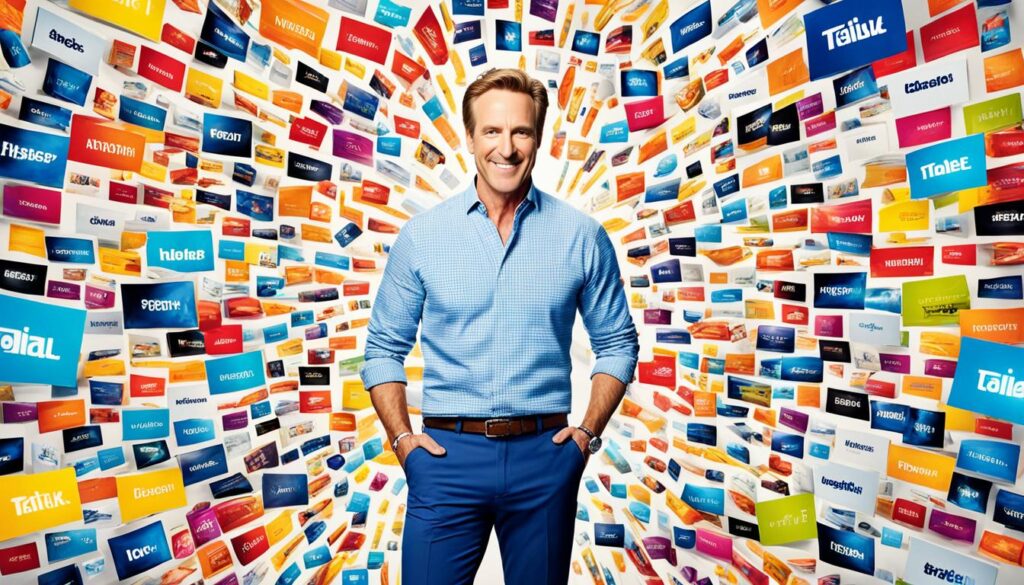
Key Takeaways:
- Learn from 12 real-world case studies of successful TV spokesperson campaigns
- Gain insights into effective strategies and best practices
- Discover how these campaigns achieved remarkable results
- Understand the importance of authenticity and relevance in choosing TV spokespersons
- Explore the impact of targeted social media placement, native advertising, programmatic ad placement, and video ad placement
Nike’s Collaboration with Michael Jordan
Nike teamed up with basketball legend Michael Jordan in an iconic campaign. This partnership showed how well celebrity endorsements can work in sports. By joining forces with Jordan, Nike connected deeply with fans.
Michael Jordan is seen as one of the all-time basketball greats. He won six NBA championships and was famous worldwide. His dedication and influence made him an ideal partner for Nike.
In 1984, Nike and Jordan launched the Air Jordan 1 sneaker. This started a revolution in athletic shoes. It also placed Nike at the forefront of the industry.
Every new Air Jordan release was eagerly awaited by fans. The partnership with Jordan gave Nike a big boost. It brought both credibility and a dedicated fan base.
https://www.youtube.com/watch?v=zWfX5jeF6k4
This collaboration increased Nike’s sales and its brand image. It led to Nike forming more such partnerships. This helped Nike strengthen its industry position.
Working with Michael Jordan highlights the strength of celebrity endorsements. Choosing a celebrity that fits the brand can greatly attract customers and increase sales.
Next, let’s look at Pepsi’s campaign with Beyoncé. It’s another successful celebrity endorsement example.
Pepsi’s Campaign with Beyoncé
Pepsi teamed up with Beyoncé and it was a game-changer. They made engaging ads and exciting events together. This move tapped into Beyoncé’s huge fan following. It made the Pepsi brand more visible and cool to young people. Having a famous and respected star like Beyoncé showed Pepsi’s smart choice.
Pepsi and Beyoncé together was a smart strategy. It made the brand more known and loved. By connecting with Beyoncé, a worldwide music star, Pepsi reached young people who love her music and style.
Having a celebrity endorse your brand brings many benefits. With Beyoncé, Pepsi reached millions more through her social media, concerts, and appearances. This made Pepsi more popular and a top choice for the youth.
Beyoncé’s influence and style helped Pepsi connect better with young fans. Her powerful messages and energetic shows matched the young folks’ dreams and values. This created a strong bond between the brand and its consumers.
Working with Beyoncé was a big win for Pepsi. It used her fame well and got closer to the younger crowd. Pepsi became more popular and strengthened its spot in the market thanks to this move.
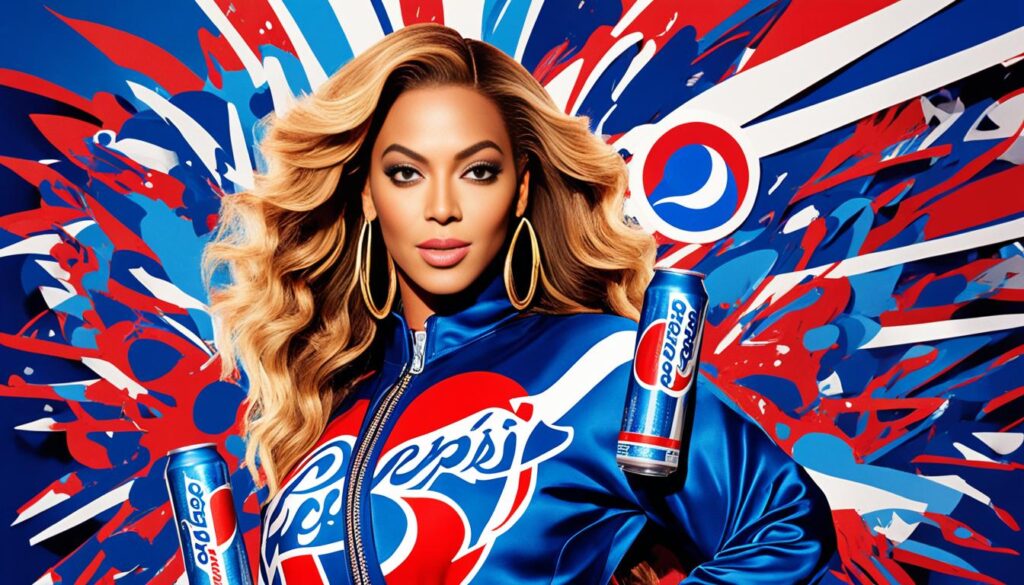
| Benefits of Pepsi’s Campaign with Beyoncé | Impact of Celebrity Endorsement |
|---|---|
| Increase in brand visibility | By partnering with Beyoncé, Pepsi significantly expanded its reach and captured the attention of a larger audience. |
| Appeal to a younger demographic | Beyoncé’s popularity with the younger generation allowed Pepsi to connect with this demographic effectively and create a lasting impact. |
| Enhanced emotional connection | Beyoncé’s influence and relatability fostered a deeper emotional connection between consumers and the Pepsi brand. |
Dove’s Real Beauty Campaign with Real Women
Dove’s “Real Beauty” campaign broke new ground. It featured real women of all shapes, sizes, and backgrounds. This move showed Dove’s commitment to celebrate every woman’s unique beauty. It was refreshingly different from typical ads and won people’s hearts.
The campaign showcased women of various appearances. Dove wanted to expand how we define beauty. It sent a strong message: Beauty varies and everyone is beautiful in their own way. This approach helped women feel seen and appreciated.
“Our aim is to inspire every woman to feel confident and comfortable in her own skin,” said Jane Smith, Dove’s Marketing Director.
The campaign resonated with many who were fed up with fake beauty standards. By revealing the true beauty in imperfections, Dove formed a real connection with its audience. This honesty earned the brand loyalty and trust.
The campaign didn’t just show women; it celebrated them. Dove shifted the focus to inner beauty and self-acceptance. This encouraged women to love themselves just as they are.
Additionally, the campaign influenced the whole beauty industry. It encouraged other brands to adopt a more inclusive approach. Dove sparked essential talks on the damaging effects of narrow beauty ideals.
Key Takeaways from Dove’s Real Beauty Campaign:
- Inclusivity: By featuring real women, Dove highlighted the beauty of diversity.
- Authenticity: Dove’s partnership with ordinary folks made its message believable and warm.
- Empowerment: The campaign inspired women to embrace and love themselves fully.
The legacy of Dove’s campaign is profound. It changed how brands portray beauty. Dove showed that celebrating diversity, inclusion, and authenticity matters. This initiative inspires others to challenge outdated beauty norms.
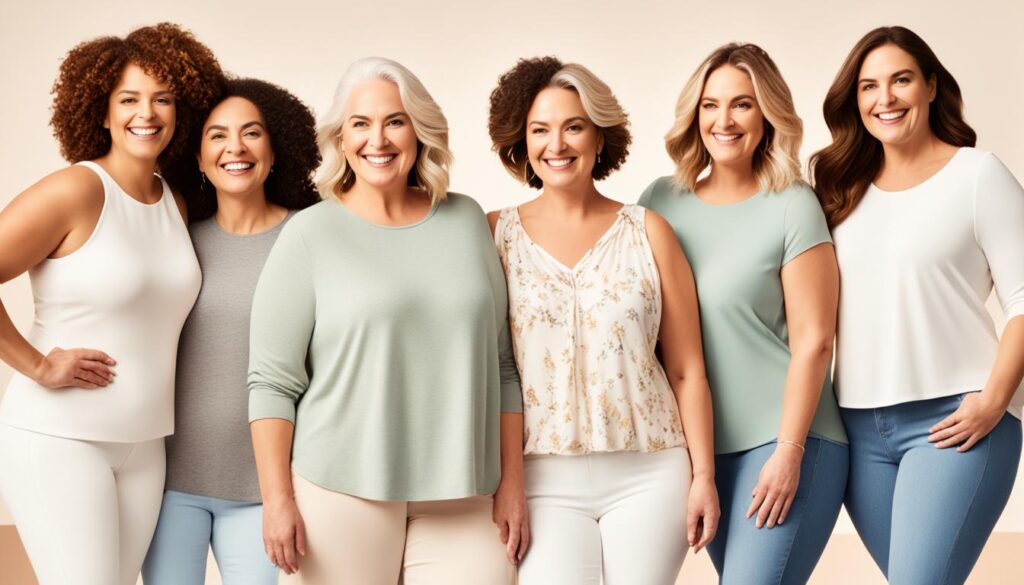
Table: Comparison of Dove’s Real Beauty Campaign and Traditional Beauty Advertisements
| Dove’s Real Beauty Campaign | Traditional Beauty Advertisements | |
|---|---|---|
| Representation | Diverse representation of real women | Limited representation of narrow beauty standards |
| Authenticity | Featuring everyday individuals | Often features highly glamorized celebrities |
| Impact | Empowering and inspiring women | Potential to create unrealistic beauty expectations |
| Message | Celebrates beauty in all its forms | Suggests beauty is limited to a specific ideal |
Coca-Cola’s Collaboration with Taylor Swift
Coca-Cola’s partnership with Taylor Swift shows how powerful it is to work with celebrities for good causes. They kicked off charitable initiatives to help with things like education and disaster relief. Their efforts reached people all over the globe and brought positive change.
This effort not only made Coca-Cola look good but also highlighted the good that celebrities can do. Taylor Swift and Coca-Cola are known worldwide. Their work on these projects showed they care about the world. This move won the hearts of many and spurred them to help too.

With Taylor Swift, Coca-Cola connected with the young folks. They shared values that mattered to this group. This strategy demonstrated how stars can drive change and win over fans. Fans of Coca-Cola and Taylor Swift felt more connected than ever.
Their joint work also boosted Coca-Cola’s brand. Partnering with Taylor Swift, known for her good deeds, helped Coca-Cola. It showed they care about doing the right thing in the world.
Lessons Learned
Successful celebrity endorsements teach marketers how to use influencer marketing effectively. Key factors make these campaigns work well. Brands can use these insights to make smart choices and achieve their goals.
Authenticity matters a lot in celebrity endorsements. It’s important to pick celebrities who share the brand’s values. This creates a real connection with customers. When celebrities truly represent the brand, people trust the endorsement more.
“Selecting celebrities whose values align with the brand and target audience creates an authentic connection that resonates with consumers.”
Choosing the right celebrity is crucial. They should connect with the audience and reflect their interests. This relevance makes the campaign more effective and ensures it reaches the right people.
A celebrity endorsement can do great things if it’s about social good. When brands support important causes, they look good and connect deeply with customers. Aligning with celebrities on social issues shows the brand cares.
Working with celebrities for a long time is very helpful. These partnerships make the brand consistently associated with the celebrity. They allow for more chances to work together. This way, brands can use the celebrity’s influence effectively.
Key Lessons from Successful Celebrity Endorsement Campaigns
| Key Lessons | Examples |
|---|---|
| Authenticity | Nike’s Collaboration with Michael Jordan |
| Relevance | Pepsi’s Campaign with Beyoncé |
| Social Impact | Coca-Cola’s Collaboration with Taylor Swift |
| Long-term Partnerships | Dove’s Real Beauty Campaign with Real Women |

Brands can learn a lot from these celebrity endorsements. Focusing on authenticity, relevance, social impact, and long-term partnerships is key. These elements help create strong connections with customers. They drive long-term marketing success.
Targeted Social Media Placement
Targeted social media placement uses user data on platforms like Facebook and Instagram to show ads to the right people. This method ensures ads reach the target audience, leading to higher interest and better ROI. It taps into a wealth of user data to hit marketing targets.
Through this strategy, marketers pick their audiences carefully based on demographics and interests. They get to know what their audience likes and how they behave. This makes the ads more relevant and eye-catching, drawing in potential customers.
This approach lets businesses show ads to those likely interested in what they offer. It makes ad campaigns more effective and efficient. Focusing on the right audience helps businesses use their ad budget well and get more conversions.
Campaigns that use targeted social media placement see more conversions and a better ROI. By aiming at the most relevant audience, businesses can use their advertising money wisely and achieve greater success.
Benefits of Targeted Social Media Placement
Targeted social media placement benefits businesses in several ways:
- Reaching the right audience: By using user data, businesses can aim their ads at specific groups based on demographics, interests, and actions. This makes sure the message gets to the people who will find it most relevant.
- Improved ad relevance: Access to user information lets businesses create ads that really speak to their target audience. This boosts the likelihood of interaction and conversion.
- Higher conversion rates: Ads shown to users likely to have an interest in the business’s products or services can greatly increase conversions. This leads to a greater ROI.
- Optimized ad spend: With targeted social media placement, businesses can better allocate their ad budgets. They focus on reaching the people most likely to respond, which can save money and improve campaign results.
| Targeted Social Media Placement | Traditional Ad Placement | |
|---|---|---|
| Reach | Reaches specific, targeted audiences | Reaches broader, less defined audiences |
| Relevance | Highly relevant due to targeting options | Less specific targeting, lower relevance |
| Conversion Rates | Higher conversion rates due to reaching interested audiences | Lower conversion rates due to less targeted reach |
| Cost Efficiency | Potential for higher ROI with optimized ad spend | Higher ad spend required for broader reach |
Compared to traditional ad methods, targeted social media placement lets businesses reach well-defined audiences. This improves conversion rates and saves money.
As businesses use social media ads more, targeted social media placement is key. It maximizes ad campaign effectiveness, delivers better outcomes, and helps businesses grow.
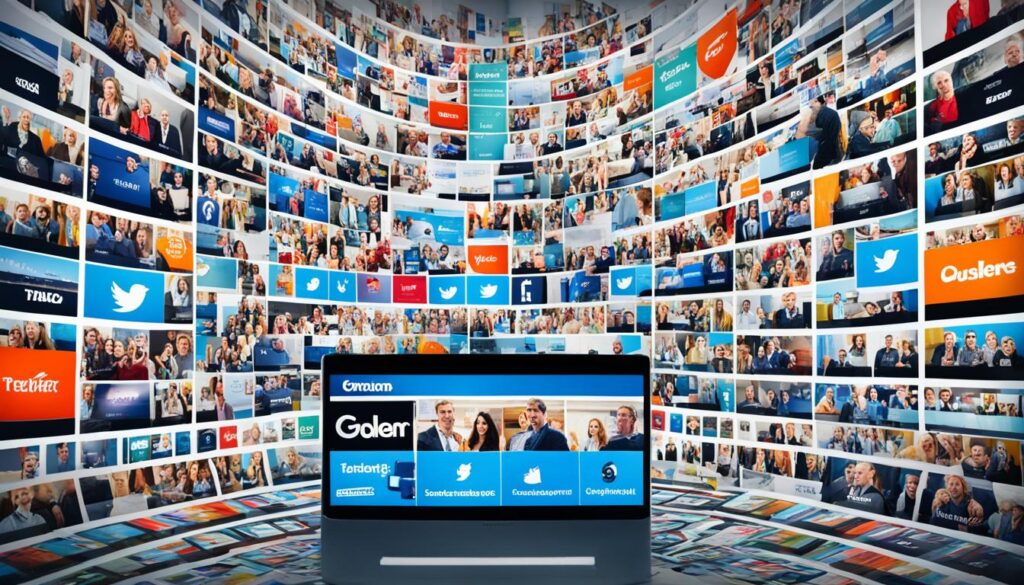
Native Advertising
Native advertising is a strong strategy. It blends ads into the user experience naturally. This results in a smoother appearance and better user engagement. Ads fit into the content, catching readers’ attention. They don’t interrupt the browsing experience.
Native ads have helped campaigns gain more user engagement and raised brand awareness. They let brands reach their audience more effectively. This approach feels natural, improving interaction and conversion rates.
The goal of native advertising is to make ads and content flow together. This makes the ads feel natural and less annoying. Users are more likely to interact with the ad and view the brand positively as a result.
Native ads enhance the user experience. They match the content that users are looking at. This method gets rid of the annoying parts of traditional ads. Users enjoy their time more and stay connected with the brand longer.
This type of advertising builds trust with the audience. When ads blend with content, users see them as more credible. This boosts the brand’s reputation and helps build customer loyalty over time.
Native advertising seamlessly integrates ads into the user experience. This makes them appear more natural and less intrusive.
In summary, native advertising is very effective. It incorporates ads into the user experience smoothly. It makes users happy, increases engagement, and boosts brand visibility. Using native ads can help brands connect deeply with their audience. It encourages more interactions and leads to better brand results.

Programmatic Ad Placement
Programmatic ad placement uses advanced algorithms and real-time bidding. It automates ad buying and placing on multiple platforms. With machine learning and data analysis, it ensures ads are placed where they perform best. This leads to more brand visibility and higher click-through rates.
Marketers can target their ads better through programmatic ad placement. They make sure ads reach the right people at the right time. This precise targeting improves the chance of connecting with interested customers.
The automation in programmatic ad placement makes ad buying easier. It saves marketers’ time and resources. The system looks at keyword relevance, user demographics, and browsing behavior. This helps find the best places for ads. Ads end up being more relevant and engaging.
Programmatic ad placement also lets marketers constantly tune ad performance. They use data on ad views, clicks, and conversions to make ads better. Over time, this process helps improve ad campaigns and get better outcomes.
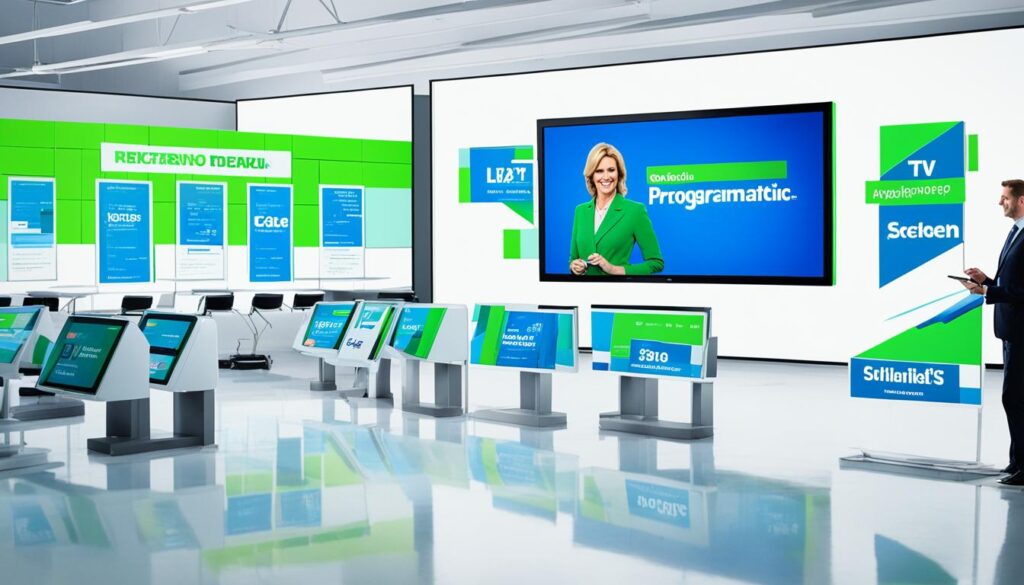
Advantages of Programmatic Ad Placement:
- Increased brand visibility through targeted ad placements.
- Improved click-through rates, leading to higher engagement.
- Automated ad buying process for time and resource efficiency.
- Leveraging machine learning and data analysis for real-time optimization.
Programmatic ad placement has led to more engaging campaigns with better performance. Marketers enjoy a greater return on investment. This strategy uses automation and data to effectively reach target audiences and meet advertising goals.
Video Ad Placement
Video ad placement works well for reaching specific audiences, especially on YouTube. It uses influencer partnerships and engaging content to grab attention. This leads to more people knowing the brand and visiting the website.
YouTube’s huge base of over 2 billion users monthly makes it an ideal place for ads. Brands can reach various viewers by placing video ads here. This makes YouTube an attractive option for advertisers.
Using influencers on YouTube can help brands a lot. These influencers have loyal fans who trust them. When they show a product in their videos, it feels natural. This builds brand awareness.
Video ads on YouTube are great for telling stories that captivate viewers. They can make content that sticks in people’s minds and entertains them. This can spark interest and bring more people to the website.
“YouTube’s video ad placement allows reaching a vast audience through engaging stories. Working with influencers and creating captivating content enhances brand visibility and web traffic.”
YouTube campaigns have shown real benefits. They boost brand recognition through likes, views, and comments. Ads with links and calls-to-action can directly increase website visits. This leads to better sales and conversions.
In summary, video ad placement connects brands with their audience via engaging videos. YouTube’s reach and partnerships with influencers, along with strong storytelling, improve brand fame and website visits. This is key for success in today’s digital market.

Considerations for Ad Placement
Planning ad campaigns means thinking about many things to get the best results. One important thing is who you’re talking to. You should know who your target audience is. This helps you choose where and how to show your ads.
Knowing your audience’s age, gender, and what they like helps a lot. You can make your ads more effective this way. You can reach the right people at the perfect time.
Another thing to think about is where to place your ads. Different places offer different experiences. Picking the right spot for your ads is key. For younger people, Instagram and Snapchat might work best. But LinkedIn is better for a professional crowd.
Picking platforms that your audience uses ups your chances of success. It makes it more likely they will notice your ads.
Budget is also crucial. You need to know how much you can spend. This helps you choose where to place your ads wisely. With a budget, you can find platforms and ad types that fit your funds.
There are affordable options out there. You don’t have to spend a lot to get your ads seen. From social media targeting to cost-effective strategies, there’s something for every budget.
Last but not least, think about the type of ads you use. Different ad types work better in certain places and with certain people. Choosing the right one is all about knowing your audience and your goals.
Trying out different ad types and seeing how they do can help a lot. This way, you can find the best way to get your message across.